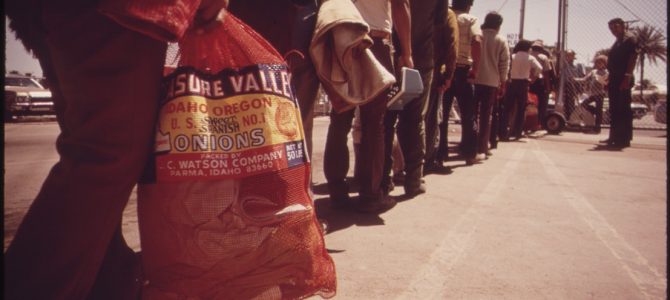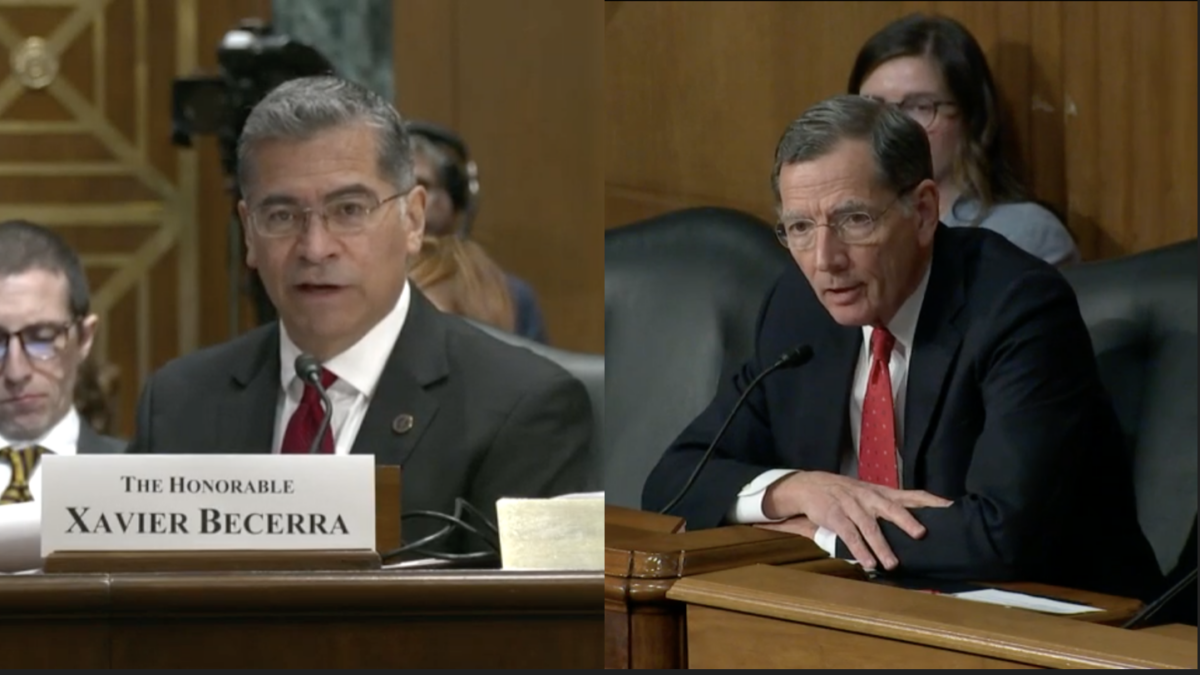
The way Donald Trump talks about immigration and the economy, you’d think we’re being overrun by illegal immigrants from Mexico and that we’re still in the throes of the Great Recession.
But we’re not. Illegal immigration peaked in 2007 and has been slowly declining since then. Although we’ve had a sluggish economic recovery under the Obama administration, unemployment is down and income is up. Things are not as bad as Trump says they are.
That’s not to say everything is fine. Our immigration system, if you can call it that, is like a Rube Goldberg machine designed by the geniuses who came up with Obamacare. While incomes are rising in the aggregate, parts of the country where manufacturing jobs once provided a stable middle-class income to blue-collar workers are now ghost towns ravaged by opioids and heroin. For people feeling the brunt of these troubles, Trump’s tale of decline resonates. When he says our political leaders are stupid and corrupt and don’t care about working Americans, plenty of working Americans agree.
But while he’s stoking these resentments, Trump does something else: he connects anxiety over immigration to particular economic problems of the working class. Not only are evil corporations moving manufacturing jobs to Mexico and China, but wily immigrants are pouring across the border and stealing American jobs. They win, we lose.
Immigration As a Scapegoat
It’s a tidy narrative, and obviously there’s an audience for this sort of thing. But it bears little semblance to reality. The laid-off steelworker in Ohio or Alabama might be forgiven for agreeing with Trump that the nexus of immigration and global trade robbed him of his livelihood. What’s harder to understand is why policy experts agree.
Last week, for example, Charles Murray announced that he’s changed his mind on immigration. The eminent libertarian sociologist used to favor a high level of immigration, but not anymore. Now, he wants to “shut down low-skill immigration for a while,” as part of a “grand experiment” to see if it will entice low-skilled Americans, especially men, to re-enter the workforce.
Murray, who has spent much of his distinguished career arguing for welfare reform in a way that encourages work, is concerned about the alarming number of low-skilled, undereducated Americans who are no longer working. Of the many disturbing social trends to surface this election cycle, the decline of the workforce participation rate—the number of working-age Americans who are actually working, or what economists call the “employment-to-population ratio”—is of particular concern. Experts disagree about what’s causing it, but everyone agrees it’s not a good sign for the country.
Murray’s comments, which he made last week at a panel discussion hosted by the Center for Immigration Studies, reflect a change in his thinking about immigration based partly on the reaction to Trump’s campaign narrative on immigration. He said:
The thing that has gotten to me over the course of this year and this intense debate has been the idea… that the citizens of a nation owe something to each other that is over and above our general obligations to our fellow human beings; that there is a sense in which we should take care of our own, our own in this case meaning Americans…Before, I rejected that pretty much without thinking.
Writing about the panel in National Review, Mark Krikorian noted that Murray’s remarks followed a presentation by Jason Richwine about how the decline in workforce participation is most pronounced among native-born men without a high school diploma, and how employers have turned to immigrants to fill those jobs. In his paper, Richwine doesn’t speculate about why this is happening, and he’s careful to note that, “this does not necessarily imply that immigrants push out natives from the workforce, but it does mean that immigrants replace natives, causing economic and social distress in the communities most affected.”
The question Murray wants to answer is: if we cut off the supply of low-skilled immigrants, will low-skilled, native-born men step in to take those jobs?
A Crisis Among American Workers
Maybe that’s a fair question to ask, and maybe Murray’s “grand experiment” will work. But the workforce participation problem he wants to solve is connected to much else besides immigration. Poor white people, for example, aren’t just withdrawing from the workforce. They’re also dying from heroin, opioids, and suicide at an alarming rate. Many of the social pathologies that have long plagued inner-city black communities are now taking root among low-income whites across the Rust Belt, Appalachia, and the Deep South.
The men in these places who don’t have high school diplomas or college degrees, both black and white, are dropping out of the workforce. It hasn’t drawn the same kind of mainstream media attention as the heroin and opioid epidemic among whites, or the recent uptick in urban violence among blacks, in part because it lacks the same pathos.
But also because it’s harder to understand. Experts have put forward varied and conflicting explanations. Some say more men are in school now. Some say disability and other welfare benefits have lured men away from work. Some, including Trump and Bernie Sanders, blame the effects of globalization on manufacturing and other low-skilled work.
But it isn’t a new trend. The labor force participation rate rose rapidly from about 1960 until 2000, when it began to decline sharply. The data is stark, especially when looking just at men. In 1948, more than 94 percent of men in their prime working years—those aged twenty-five to fifty-four—were working. Last year, it was only 83.4 percent. Looking at the workforce participation rate in 1965, if it had held steady there would be 10.5 million more men working today.
It didn’t hold steady, and the trend-line is long enough that it can’t be blamed on the Great Recession. Although the work rate has been slowly climbing in recent years, it still hasn’t reached its 2007 level (neither has household income).
Americans Who Refuse To Work
Most immigration consists of two groups. There’s the highly skilled and educated, and low-skilled adults and children. It’s easy to see how highly skilled workers contribute to the economy. What many Trump supporters have a problem with are low-skilled immigrants, legal and illegal.
Blaming immigrants is obviously more politically useful than, say, blaming robots. But the truth is that automation has affected low-skilled jobs far more than immigration, and that trend will continue whether or not we build a border wall. In just the last two years, 320,000 industrial robots have been sold, vastly increasing efficiency—not just in industrial applications but also in the service sector. As more uses are found for automation across the economy, productivity will continue to rise even as job growth slows.
New technology is even changing the sector most associated with migrant labor: farms. Crop-picking robots aren’t that far off, and farm owners in the U.S. are keen to invest in research and development, in part because of a growing shortage of farm workers. More than half of all farm workers are illegal immigrants, but that labor pool is shrinking, in part because more Mexican immigrants are leaving the country than are coming in, according to a 2015 report from Pew. That means more competition among farms to attract workers, which means higher wages. According to a CNN report last week, the competition for farm workers has boosted wages to $12 an hour, more than California’s $10-an-hour minimum. Some farms are paying as much as $15 an hour.
And while California farms are competing for immigrant labor at those wages, they can’t seem to attract American workers. Tom Nassif, CEO of a trade organization called Western Growers, tells CNN, “Americans want stable jobs with vacation and other benefits. That doesn’t exist in agriculture.”
All of which to say: if Charles Murray—or Donald Trump—thinks closing the border will bring back American jobs for low-skilled men who have dropped out of the labor force, then I know of a farm in central California that would make a great investment, believe me.









